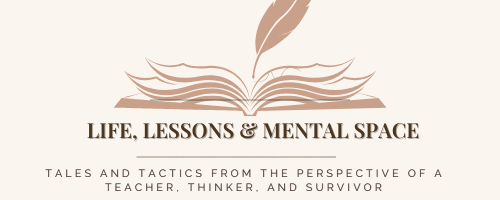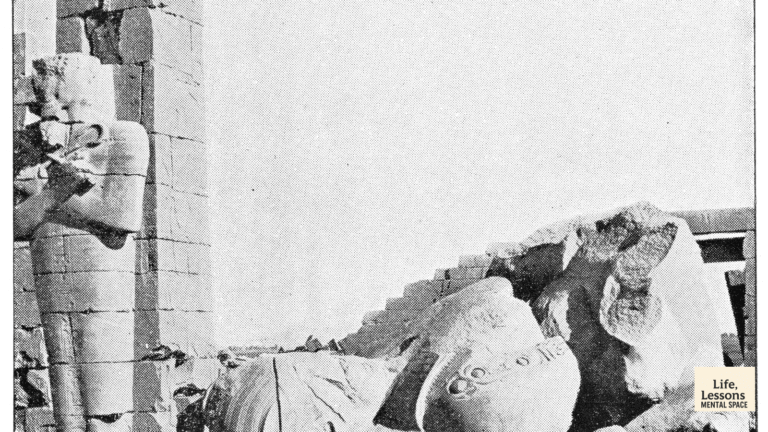A Life Lesson in 20 Lines
Some poems stay with you not because they are fancy or hard to understand, but because they speak straight to your own life. The Road Not Taken by Robert Frost is one of those poems. It’s short, clear, and simple on the surface, but it carries a profound truth: life is composed of choices, and once we make one, it shapes our journey in ways we may never fully understand.
Robert Frost’s “The Road Not Taken” is one of the most famous and often misunderstood poems. At first glance, it appears to be a simple story about making a choice, but a closer examination reveals much more about human nature, decision-making, and how we reflect on our lives. Let’s take a journey through this poem together.
Summary of “The Road Not Taken”
On the surface, the poem tells the story of a person walking through a “yellow wood” (meaning it’s autumn, with yellowing leaves). The path the traveler is on splits into two different roads, but he can only take one of them. The traveler stands for a long time, trying to decide which path to take, because they know they can’t travel both at the same time. They look down one path as far as they can see before it disappears into the trees and bushes.
After much thought, the traveler chooses the other path, believing it might be “just as fair” or even have “the better claim” because it looks less used, “grassy and wanted wear.” However, the traveler quickly corrects this thought, admitting that both paths were worn “about the same” by people walking on them.
The next morning, both paths are covered in fresh leaves, showing that no one had walked on them yet that day. The traveler tells themselves they will save the first path for another day, but they also know that one choice often leads to another, making it unlikely they will ever return to that exact spot to take the other road.
Finally, the traveler imagines a future time, “ages and ages hence,” when they will tell this story. They will claim that they took “the one less traveled by,” and that this choice “has made all the difference.”
The Figurative Meaning
While the literal meaning is about taking a walk in the woods, the poem’s true power lies in its figurative sense.
- The Roads: The two roads are symbols for the choices we face in life. These aren’t just physical paths; they represent different life decisions, career paths, relationships, or even ways of thinking.
- The “Yellow Wood”: The yellow wood symbolizes a time of change, maturity, or a significant point in life when vital decisions must be made. Autumn is a season of transition, often associated with reflection.
- The Traveler’s Choice: The act of choosing between the two roads represents the difficult decisions we all encounter. Life is full of forks in the road, and we often have to pick one way without knowing exactly where it will lead.
- “The Road Less Traveled By”: This is the most famous line, often interpreted to mean choosing a unique or unconventional path. However, the poem suggests that the roads were quite similar. The “difference” might not be in the path itself, but in how the speaker remembers and interprets their choice later in life. It reflects the human tendency to create a narrative about our past, often emphasizing our unique choices.
Step-by-Step Analysis
Let’s break down the poem stanza by stanza to see how Frost builds his ideas.
Stanza 1: The Dilemma
Two roads diverged in a yellow wood,
And sorry I could not travel both
And be one traveler, long I stood
And looked down one as far as I could
To where it bent in the undergrowth;
Here, the scene is set. The speaker is in a wood, likely in autumn, as indicated by “yellow.” The main problem is immediately presented: two paths going in different directions. The speaker feels a sense of regret (“And sorry I could not travel both“) because they can only choose one. This highlights a universal truth about life’s choices, we can’t experience every possibility. The speaker stands for a “long” time, showing the difficulty and importance of the decision. They try to see as far as possible down one path, emphasizing our desire to know what lies ahead, even though the path soon disappears into the “undergrowth” (thick bushes and plants), symbolizing the unknown future.
Stanza 2: The Choice and the Contradiction
Then took the other, as just as fair,
And having perhaps the better claim,
Because it was grassy and wanted wear;
Though as for that the passing there
Had worn them really about the same,
The speaker makes a choice, taking “the other” road. They initially try to justify this choice by saying it was “just as fair” or even “better” because it looked “grassy and wanted wear” – meaning it seemed less used. This suggests a desire for uniqueness or a path less taken. However, Frost immediately introduces a crucial twist: “Though as for that the passing there / Had worn them really about the same.” This line is essential because it contradicts the speaker’s initial thought. It tells us that, objectively, the paths were not that different at all. This suggests that perhaps the “difference” is more in the speaker’s mind than in the reality of the paths.
Stanza 3: Realization and Foresight
And both that morning equally lay
In leaves no step had trodden black.
Oh, I kept the first for another day!
Yet knowing how way leads on to way,
I doubted if I should ever come back.
This stanza reinforces the similarity of the two paths. Both were covered in fresh, untrodden leaves, meaning no one had walked on either of them that morning. The speaker expresses a common human desire to keep options open (“Oh, I kept the first for another day!”). But then, with a touch of wisdom, they acknowledge that life’s choices are often irreversible: “Yet knowing how way leads on to way, / I doubted if I should ever come back.” This means one decision leads to another, and it becomes increasingly difficult, if not impossible, to return to a past “fork in the road” and choose differently.
Stanza 4: Future Reflection and Self-Narrative
I shall be telling this with a sigh
Somewhere ages and ages hence:
Two roads diverged in a wood, and I—
I took the one less traveled by,
And that has made all the difference.
In the final stanza, the speaker shifts to the future. They imagine looking back on this moment “ages and ages hence” (many, many years from now). The “sigh” is ambiguous, it could be a sigh of contentment, relief, or perhaps a subtle hint of regret or wistfulness for the path not taken. The famous lines follow: “I took the one less traveled by, / And that has made all the difference.” This is where the poem becomes complex. Given the earlier lines that said the paths were “really about the same,” this final statement suggests that the “difference” might not be in the actual path taken, but in the story the speaker tells about it later. We often look back at our lives and create a narrative where our choices seem more significant or unique than they might have been at the time.
Elements of Poetry
- Elements of Poetry
- Speaker: The speaker is a solitary traveler, reflecting on a past decision. They are thoughtful and perhaps a little wistful, someone who understands the weight of choices.
- Setting: The poem is set in a “yellow wood,” which typically indicates autumn. This time of year often symbolizes change, transition, and the end of one phase before another begins. The “diverged” roads create a physical setting for the central conflict of choice.
- Theme: The main themes include:
- Choice and Decision-Making: The core of the poem is about the act of choosing between two seemingly equal options.
- Regret and Acceptance: There’s a subtle interplay between the regret of not being able to take both paths and the eventual acceptance (or perhaps self-deception) of the chosen path.
- Individualism vs. Conformity: The idea of taking the “less traveled by” path often resonates with those who want to be unique, though the poem complicates this.
- The Power of Narrative: The poem suggests how we construct stories about our lives, sometimes altering the truth to make our past choices seem more meaningful.
- Rhyme Scheme: The poem follows an A B A A B rhyme scheme in each stanza.
- Example (Stanza 1): wood (A), both (B), stood (A), could (A), undergrowth (B).
- This consistent rhyme scheme gives the poem a musical quality and a sense of structure, even as the speaker’s thoughts wander.
- Rhythm/Meter: Frost uses a fairly consistent rhythm, mostly iambic tetrameter. This means each line generally has four “iambs” (a two-syllable unit with an unstressed syllable followed by a stressed syllable, like “da-DUM”). This creates a natural, conversational flow, similar to everyday speech, making the poem feel accessible.
- Literary Devices
- Metaphor: The most significant literary device is the metaphor of the “roads” representing life choices. The physical paths are not just paths; they stand for the different directions a person’s life can take.
- Symbolism:
- The Roads: As mentioned, they symbolize the choices in life.
- The Yellow Wood: Symbolizes a significant stage in life, perhaps middle age, or a moment of significant transition.
- Leaves: The untrodden leaves symbolize freshness, newness, and the idea that the paths haven’t been influenced by others that day.
- Imagery: Frost uses vivid imagery to help us visualize the scene:*”yellow wood” (sight)
- Repetition: The phrase “ages and ages hence” is an example of repetition. It emphasizes the vast amount of time that will pass before the speaker looks back on this moment, highlighting the long-term impact of the decision.
- Irony: There’s a subtle but essential irony in the poem. The speaker claims to have taken “the one less traveled by” in the final stanza, suggesting a unique or brave choice. However, earlier in the poem, they admit that the paths were “really about the same.” This creates a tension between the speaker’s actual experience and the story they will later tell about it. The irony prompts us to question how much of our personal narratives are truly objective and how much is shaped by our desire to present ourselves in a certain way.
Literary Devices
- Metaphor: The most significant literary device is the metaphor of the “roads” representing life choices. The physical paths are not just paths; they stand for the different directions a person’s life can take.
- Symbolism:
- The Roads: As mentioned, they symbolize the choices in life.
- The Yellow Wood: Symbolizes a significant stage in life, perhaps middle age, or a moment of significant transition.
- Leaves: The untrodden leaves symbolize freshness, newness, and the idea that the paths haven’t been influenced by others that day.
- Imagery: Frost uses vivid imagery to help us visualize the scene:
- “yellow wood” (sight)
- “undergrowth” (sight)
- “grassy and wanted wear” (sight, texture)
- “leaves no step had trodden black” (sight, touch). This imagery helps to create a clear picture in the reader’s mind and makes the setting feel real.
- Repetition: The phrase “ages and ages hence” is an example of repetition. It emphasizes the vast amount of time that will pass before the speaker looks back on this moment, highlighting the long-term impact of the decision.
- Irony: There’s a subtle but essential irony in the poem. The speaker claims to have taken “the one less traveled by” in the final stanza, suggesting a unique or brave choice. However, earlier in the poem, they admit that the paths were “really about the same.” This creates a tension between the speaker’s actual experience and the story they will later tell about it. The irony prompts us to question how much of our narratives are truly objective and how much is shaped by our desire to present ourselves in a certain way.
Personal Reflection: The Road I Took
This poem hits home for me. I had a choice: stay where I was, in the familiar, or move halfway across the world to a place I had never been, where no one knew me. I had a visible physical limitation, and many would have said, “Stay. Play it safe.” But I chose to go. I chose the unfamiliar road. And that choice changed my life.
That’s the heart of Frost’s message. We all face these moments. We don’t get to know what would have happened on the other road. We only live the one we take. And whatever happens next, we own that decision. Sometimes it leads to growth, sometimes to struggle, but it shapes us.
Final Thought
The Road Not Taken is often misunderstood as simply encouraging people to be different. But it’s deeper than that. It’s about owning your choices, even when you don’t know where they’ll lead. It’s a reminder that life moves forward, and every decision carries weight, even if we don’t realize it at the time. Moreover, It invites us to think about how we make decisions, how we perceive the paths we choose, and how we look back on our lives. Frost cleverly uses everyday language and a familiar setting to explore deep ideas about self-perception and the stories we tell ourselves about our journey.
So when you’re at your crossroads, whether it’s choosing a school, a job, a relationship, or even starting over somewhere new, remember: you can only take one road. Choose wisely, walk it fully, and let it shape who you become.
Have you ever had to choose between two paths in your life? Share your “road not taken” moment in the comments below.
Want more poem reviews and teaching resources? Subscribe to the blog or follow along on my podcast and YouTube channel for more literary insights.




